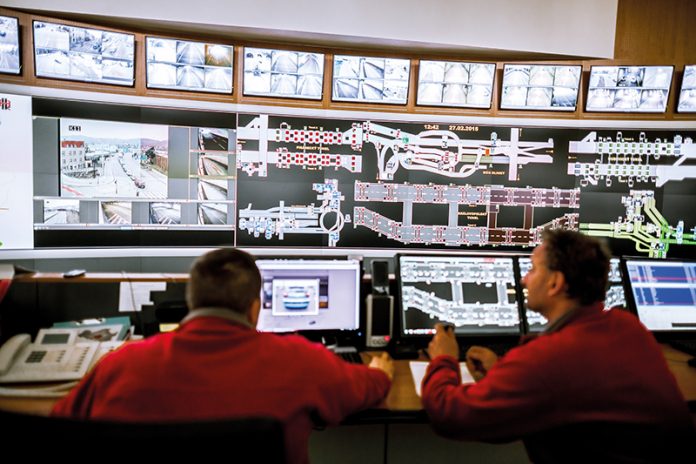Jens Strinsjö of Axis Communications analyses the barriers to smart city innovation and why cybersecurity and sustainability will be critical to demonstrate long-term value
The smart city offers significant benefits. These urban constructs are capable of reducing waste, driving efficiencies, optimising resources and increasing citizen engagement. Such benefits are reflected in the $189bn that is anticipated to be spent on smart city initiatives globally by 2023. Public safety remains a priority area and the use cases most likely to see the money will include surveillance systems, intelligent traffic management systems and smart grids.
Smart cities offer both the business and public sectors the opportunity to embed improvements that can not only transform citizen engagement but also reduce top-line spend. However, for the vision of the smart city to be fully realised, there are challenges that must be overcome. While smart technology, at its core, enables the collection and analysis of data to create actionable and automated events which streamline operations, its effectiveness can be limited by the silo mindset. To deliver at scale, interoperability is key. Not just in terms of the technology, but the entire smart city vision.
Change behaviours and break the silo
Too often, city leaders think of smart city initiatives as individual strategies, for example, smart parking, smart security, smart traffic. Each area is treated as a standalone project rather than part of a comprehensive whole. The result is that the solutions, while smart and capable, are being implemented as silos and therefore limited to a narrow focus. The smart city vision cannot be realised by using technologies in isolation, with no thought given to how they might relate to, or work with, one another to achieve a common goal.
Success in smart cities is dependent on maintaining the balance between the technology, the level of integration, the data collected and how this data can be leveraged to deliver the right intelligence. Smart cities must move away from the traditional operating model, which involves silos and departments only focusing on one area of operation. Instead, collaboration between teams and systems is critical to the development of the fully scalable and smart city, where data can be shared horizontally for the benefit of multiple teams.
Making informed decisions on technology investment
The smart city cannot achieve its potential without a clear and holistic strategy that takes into account multiple requirements and determines how technologies can be used to deliver the required outcome; a centralised smart city mandate that feeds into every initiative and investment. This will involve siloed teams collaborating and sharing their learnings so that data and analysis from integrated cloud-based services can help them to achieve their combined goals and visions. Only then can connected systems, cameras and sensors come together to make the truly smart city a reality.
However, there is a natural dispensation towards purchasing low cost solutions that are perceived as offering the same value as their more expensive equivalents. While some have taken the decision to implement such solutions in an attempt to unlock the required benefits while saving their bottom line, the limited lifespan of these technologies puts a heavier cost and reputational burden on to organisations by their association.
End-to-end value: Focus on the total cost of ownership
Others have wisely looked towards solutions that are manufactured using ethical approaches and sustainable practices by companies with appropriate credentials. The concept of Total Cost of Ownership (TCO) is well established and offers strategic buyers a mechanism to consider all of the aspects involved when purchasing, setting up and operating a new system, evidencing the complete end-to-end value that is otherwise difficult to ascertain. In relation to the physical security of the smart city environment, ensuring comprehensive protection of people, premises and assets begins with the integrity of the systems deployed and the pedigree of the vendors behind those technologies.
TCO can highlight labour costs and identify what percentage of the overall total these equate to. Labour costs that make up a significant percentage of the total cost of a project could indicate a need to invest in automation to reduce these costs. TCO can also introduce vendor assessments that allow full visibility of the costs that the system will occur over the long term. Cheaper technology that is not sustainable can result in a false economy, where continued maintenance and repair is necessary to keep it operational.
Security and sustainability: Critical smart city factors
In the future, a focus on cybersecurity and sustainability in the enabling of the smart city environment will be critical. TCO can be assessed against multiple sustainable metrics that include energy consumption, power demands, product lifespan, maintenance and risk. For example, a system employing low power cameras and low-light image capture technologies can result in a reduction in overall power consumption, which will contribute to a low carbon footprint as well as an overall reduction in the TCO.
From a security perspective, evidence of a technology provider’s cybersecurity credentials and service agreements provide assurances around the integrity of the technologies themselves. The right technologies are those that are deemed secure and fit the requirements of the NIS Directive.
In the physical security arena, Secure by Default accreditation and Cyber Essentials Plus are accolades that evidence a manufacturer’s security credentials.
The implementation of secure cameras and sensors will bring peace of mind to smart city officials. Such systems, capable of delivering data that can drive and support operations for multiple stakeholders, will form the cornerstone of the smart city. Breaking away from a silo mentality and embracing collaboration allows multiple teams to use this technology for a mutually beneficial purpose: to finally make the smart city a reality.
To learn more download Smart City Security: The Real and Total Cost of Deployment.
Jens Strinsjö
Segment lead, smart cities
Axis Communications
+46 46 272 18 00
Twitter: @axisipvideo
LinkedIn: Axis Communications
Youtube: Axis Communications

















